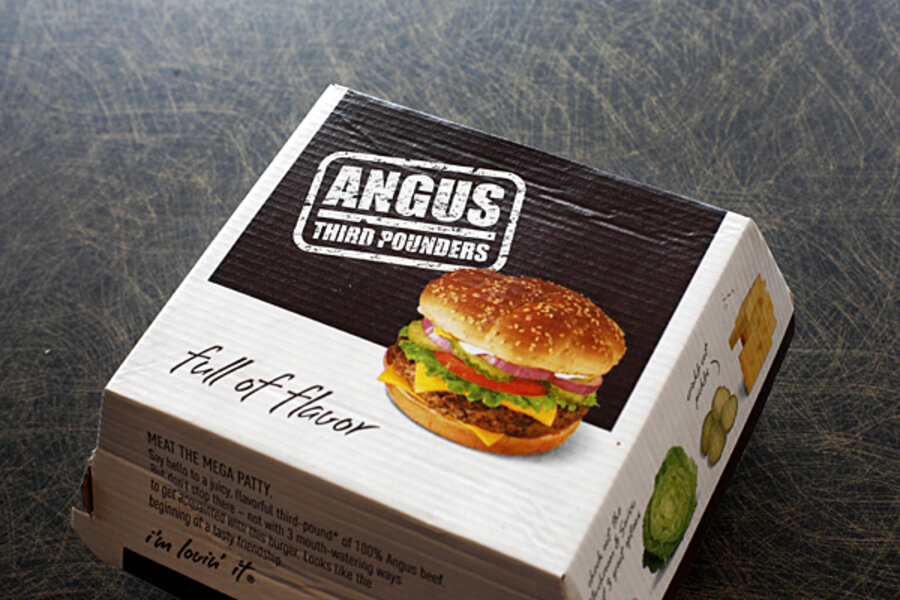Stop buying convenience foods. Save money.
Loading...
For about a year, I used to buy these really great salad kits at our local grocery store. They came in these nice little clamshell boxes, had a fork already in there along with some salad dressing, and the salad was usually a pretty good one. It was incredibly easy to grab three or four of these and use them for quick meals on the go.
One day, though, I stopped and actually added up the cost. The salad kits were $5.99 each. I could pull four reusable containers out of the cupboard, get a bunch of those little cups for keeping salad dressing in, a bottle of good dressing, and a big bag of salad, along with some “extras” for the salad like croutons. I’d spend maybe $10 getting started and then about $4 or $5 a week after that and I could duplicate those salad kits in my kitchen.
I’d just open up a plastic container, add my salad, put a bit of dressing in a little cup, toss the cup in there, toss a fork in there, close it, and stick it in the fridge. It took about a minute and the total cost was well under $2 – far less than the $5.99 for the kit.
So, I started making four of these kits each weekend. I’d just buy a bunch of salad greens at the store along with dressing or any toppings if I needed them, then I’d just make four “kits” assembly line style in the kitchen. They’d sit in the fridge for either Sarah or myself to grab for a quick lunch.
Looking back on it, it was my experience with the salad kits that made me realize how much of a waste most convenience foods are. About the only thing they have going for them is that they arguably save you a minute or two. In about every other respect, they strike out.
Rather than sticking with the salad kits, I’ll compare taking a sandwich to work versus buying one from the street vendor that used to be fairly near my old workplace.
If I strolled down to that vendor at lunch time, I could buy a sandwich, a drink, and a bag of chips for about $7 for lunch.
Time It seemed convenient – he was usually making them from about 11 AM to about 1:30 PM nonstop, so I could just stroll down there whenever I had a break in my work. When I’d actually place an order, my sandwich would hit the grill and then be in my hands in about four minutes or so. Sweet, right?
The thing I’d often not consider is that there was usually a line for his offerings. I’d stand there for at least five minutes waiting – and on busier days, the wait was more like fifteen.
I’d also have to stroll down there. I could get over to his station in about five minutes, and it’d take me about five minutes to walk back.
So, in my head, I’d only think of the four minutes I had to wait to get the sandwich, and I’d forget about the eleven minutes in line, the five minutes, to walk there, and the five minutes to walk back. That “convenient” lunch gobbled twenty five minutes and I haven’t even eaten it.
On the other hand, if I brought a meal with me, I probably spent five minutes prepping it at home and it may or may not require another minute in the microwave in the office. Even if I walked down to a nice place to sit to enjoy my meal, I’m looking at maybe ten total minutes before eating.
Money This was where the drawbacks became harder to ignore. It was pretty obvious that I could go to the grocery store and get everything in my meal for about $3 or $4. I could argue that it was more convenient to get it on site and I was paying for that convenience, but it wasn’t really true.
Healthiness When I make the sandwich myself, I can control the healthiness. At the sandwich stand, the guy would use copious amounts of grease and salt. Sure, it made for a yummy sandwich, but you pay for that kind of eating over the long run. If I make it myself, I can control how healthy or unhealthy it is.
Camaraderie What about strolling over there with coworkers? Most of my coworkers enjoyed that same place for lunch.
Well, I started taking my meal over there with them. I’d stand in line with them for a bit until I spied a table clearing up, then (since I didn’t have to wait in line for food), I’d snag that space. I’d hold the table for them until they came over and we’d eat together.
Hey, since I’m just waiting on them for ten minutes, it was a perfect chance to get some reading in without missing hardly any camaraderie and also gaining some appreciation for holding the table for them.
Here’s the truth of it: when you start breaking down the pieces, convenience foods fail in most areas except for convenience – and they sometimes fail there, too. They’re usually expensive, they usually take more time than you think, and they’re usually atrociously unhealthy, too.
A bit of forethought can eliminate pretty much everything a convenience food provides for you. If you plan ahead, you can have a cheaper, healthier, (likely) tastier, and (likely) faster meal.
The key is thinking ahead and planning a little bit. In my eyes, that’s often the one big key to almost everything in personal and financial and frugal success.








